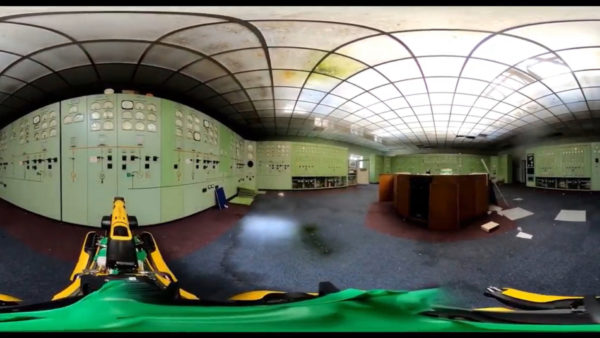
It’s a simple but vital question: why is the ‘why’ of ISO 19650 being lost? John Ford considers the challenge and proposes solutions.
In 2018, and later in 2020 via this article on BIMplus, I explained how the specification of information management processes (the ‘what’) was becoming increasingly well communicated as part of project management within construction, but the ‘why’ was being lost or ignored entirely.
What’s the implication of this? It signifies that information requirements lack alignment with authentic client needs. These misleading requisites would continue to cascade down the chain, be priced and eventually lead to an output that perhaps the client did not want or could not use.
The notion of a joined up information management process across an asset’s lifecycle predates the standard by well over a decade. Although it was perceived much earlier, it wasn’t until 2013/14, with the UK’s release of PAS 1192 Parts 2 and 3, that the intricate process emerged, outlining sequential steps for leveraging a pull-based approach to information management, using information modelling as the catalyst.

When this process was mandated by the government in 2011, both excitement and concern followed regarding its impact on our industry. Bold predictions foresaw a transformative digital landscape in five to 10 years, with billions saved and seamless information access.
This compelling vision is rooted in logic: in the past, the critical information often needed was incomplete, wrong or missing entirely, while this new concept theoretically allows you to identify what critical information you need and others spend time and resource providing it. And, of course, it should be relatively easy to define what information you need because you should be clear as to why you’re asking for it.
Defining ‘why’

“The crux of ISO 19650, however, is that it isn’t easy to define this crucial ‘why’. In fact, it is extremely difficult.”
The crux of ISO 19650, however, is that it isn’t easy to define this crucial ‘why’. In fact, it is extremely difficult as many clients are complex organisations, broken up into divisions or silos – something the construction industry can understand very well! Yet they are the ones that absolutely must drive this and find a way to break those silos down to build a well-rounded picture of their organisational, portfolio and project information needs as required by the first step of the process above.
Such an undertaking could span several months, if not years. Moreover, additional challenges might emerge should they realise that their organisation and associated stakeholders, including facility and asset managers, are unprepared or have not procured with modern digital methodologies in mind – a circumstance that prevails for many.
Putting the why before the what
So how can you complete the second step of the process by having the ‘what’ defined without a ‘why’ being well understood?
Well, it’s quite easy it seems. You can save yourself a lot of time by merely delegating development of the second step of the process above while partially or completely disregarding the first, possibly through copying an old template or asking someone to develop a shiny new one. This challenge persists even within exchange information requirements (EIR) that appear well developed on the surface. It’s clear they have devoted considerable time to scrutinising the ‘what’, but the ‘why’ remains rooted in a vision rather than practicality.
Let me clarify. These somewhat superior EIRs delineate information outputs, usually in a digital context that the end users just can’t use, and may not be able to use for many years due to their ongoing reliance on traditional formats or processes. They might even encounter difficulties in receiving such outputs, given the absence of foundational prerequisites such as a common data environment, a pivotal element of the process’s first step above. And without more incentives or investment, this could be the norm for some time.
No sign of improvement
“The reality is that clients and stakeholders aren’t receiving the necessary right advice or resources to focus on the first step and concentrate on the second.”
Regrettably, the data I’ve gathered, which I have maintained over the years, shows no improvement. Despite the introduction of tools like ISO 7817 and BSI Flex 1965, which have real potential to help solve these issues if the right time and energy was invested, there’s no evidence of a discernible shift in the right direction. The reality is that clients and stakeholders aren’t receiving the necessary right advice or resources to focus on the first step and concentrate on the second.
Although this arguably adds more cost than value for clients, subcontractors and consultants will also feel the pinch as they strive to digitise their information, navigating numerous new standards published every year and risk contract losses if they don’t comply. Worse still, anyone who inadequately articulates requirements and neglects proper pricing may incur substantial bills when they realise their error, further eroding margins.
So, what’s the answer?
Leadership
We have chosen a destination, but have not checked the compass to ensure we are still on course. I feel a rekindling of the idea behind the 2011 industry-driven approach where an industry working group outlined a path that led to the 2011 BIM mandate is vital once more to realign our trajectory, especially for the public sector. In doing so, we can address the unresolved ‘why’ challenge in various public sectors that is hindering the full adoption of an ISO 19650 approach.
This call is aimed at industry leaders to work closer with government to spearhead a renewed review as we did in 2010/11. The endeavour is no small feat, but is undeniably in our collective best interest as well as the public purse’s.
Ownership
Drawing from my 2020 BIMplus article, a reintroduction of the underachieved October 2016 objective, designed to test if projects are truly following the process above, is necessary. Using such an approach, we can determine whether our current course is genuinely on target or merely introducing inefficiency into what could otherwise be a value-driven process.
We knew this was required to ensure the 2016 objective was done right, but unfortunately it got forgotten about and never materialised. It may be seven years too late, but testing this across the public sector may result in findings that influence our leaders to take ownership by providing the vital evidence needed to agree a way forward and following it through.
Steady the ship
Prioritising proven concepts and fostering open dialogues is key. While adept at producing standards, our ability to ensure their foundation on tried-and-tested methodologies and share these methodologies remains limited. Numerous standards have been introduced with glaring deficiencies, yet open discussions on these issues remain uncommon. It’s challenging to openly admit shortcomings and invest resources in resolution, but it’s imperative for progress, even if it entails costs.
John Ford is head of digital delivery at Galliford Try.
Don’t miss out on BIM and digital construction news: sign up to receive the BIMplus newsletter.
Comments
Comments are closed.














So true yet so sad. How did we end up here?
I am handing over a project at the moment where the client has just asked for all the O&Ms in paper after we have just spent 6 months compiling an interactive O&M linked to COBie as required by the BIM requirements. I was quite proud of it but I know it will never be used now so feels like months of work down the pan.
John a good article in as much as it revisits the original needs or the ‘WHY’ requirements. The GIRI group also demonstrates in their work that we have not finished with the original intent as most projects are still operating an old culture in delivery. On the problems of EIR, in its original context, we were not looking at something new we just wanted to move the Asset Management activity into a digitized data world and away from boxes of paper. The original ‘WHY’, is as you state, still there but we have failed to upskill the data users, their technology and their training and education. PAS 3 and ISO 3 failed in this as it did not give any guidance or requirement on how the AIM is managed and updated through the maintenance cycle, if indeed it does need updating rather than just recording. The whole process of updating in use or through further changes or addition to the original asset is missing. This must not be seen as a cost and any standard or process should also define financial as well as operational benefit.
Great article John
Hope it doesn’t end though, puts me out of a job!
We are seeing this more and more in Australia. Even today I had a 4 hour meeting with a Clients BIM manager trying to understand LOD 400 assignments to everything. The client looking gormless because they dont understand or need it and their BIM manager working for their project manager unable to explain why for any of it. Copy and paste EIRs are every where. Now and then you will see some bits you know to be true, others just added because the ISO asks you to consider it and you cant exclude it in the EIR without risk of looking like you didn’t.
Fantastic article with insightful comments. It’s reassuring to know that others share the fatigue of enduring this repetitive cycle. My sympathies go out to Louise and Mervyn, a lecturer at my former university, who started this journey but was dropped when he to challenged the direction it was heading.
John, best of luck in capturing someone’s attention. Unfortunately, our BIM Circle has become accustomed to minimal effort. The very organizations formed to supposedly help with addressing these challenges try not to focus on the big issues.
For those unaware, John is always on social media shouting about the issues and offers services to help, something I once tried and regret. However if you follow him, you will see that when you shout about these things, like Mervyn, you will be expelled from the club lol. I dont think the leaders he mentions in this article like having the status quo challenged! But lets be honest – who does? which is why nothing will change for a long time imo
A really refreshing read. I can sympathise with this wholeheartedly. I am nearly 60, spent my entire career bouncing between handover manager and design manager and I have never seen the disparity that I have since BIM came along. We seem to spend days just talking about how we are to force bar codes into Revit or put all our O&Ms in COBie and no one seems to know why they are doing it, including the client. The information we hand over now is more fragmented than ever because, as this article implies, we have lost focus on why we are doing what we do. As a handover manager on a £122m project for a subsidiary of the home office, they have spent nearly a million to pay a third party to help and oversee the contractor do all the “BIM stuff” including developing data but have just recently confirmed they only want the O&Ms in PDF using a cloud-based tool they have selected. They have now asked for a separate asset register to be compiled to, which half the data it wants isn’t part of COBie, and the other half of COBie isn’t required in this register so it’s a big wasted effort. So I am glad others are experiencing this and not just me. I can’t wait to retire as I have had enough of it.